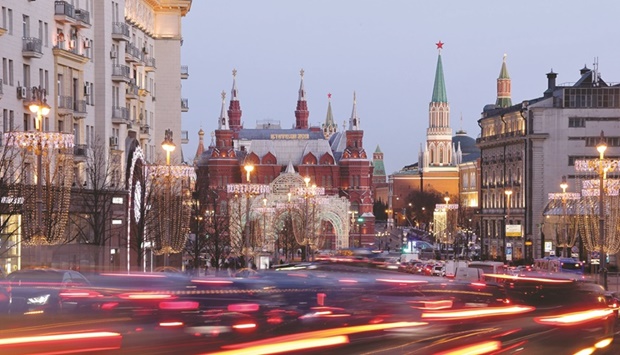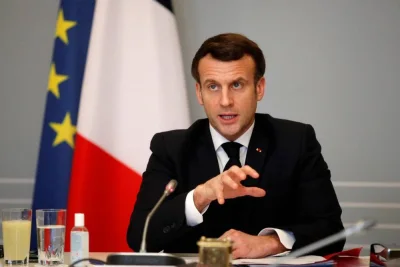Russia may face a longer and deeper recession as the impact of US and European sanctions spreads, handicapping sectors that the country has relied on for years to power its economy, according to an internal report prepared for the government.
The document, the result of months of work by officials and experts trying to assess the true impact of Russia’s economic isolation due to President Vladimir Putin’s invasion of Ukraine, paints a far more dire picture than officials usually do in their upbeat public pronouncements.
Bloomberg viewed a copy of the report, drafted for a closed-door meeting of top officials on August 30. People familiar with the deliberations confirmed its authenticity.
Two of the three scenarios in the report show the contraction accelerating next year, with the economy returning to the prewar level only at the end of the decade or later. The “inertial” one sees the economy bottoming out next year 8.3% below the 2021 level, while the “stress” scenario puts the low in 2024 at 11.9% under last year’s level.
All the scenarios see the pressure of sanctions intensifying, with more countries likely to join them. Europe’s sharp turn away from Russian oil and gas may also hit the Kremlin’s ability to supply its own market, the report said.
Beyond the restrictions themselves, which cover about a quarter of imports and exports, the report details how Russia now faces a “blockade” that “has affected practically all forms of transport,” further cutting off the country’s economy. Technological and financial curbs add to the pressure. The report estimates as many as 200,000 IT specialists may leave the country by 2025, the first official forecast of the widening brain drain.
Publicly, officials say the hit from sanctions has been less than feared, with the contraction possibly less than 3% this year and even less in 2023. Outside economists have also adjusted the outlooks for this year, backing off initial forecasts of a deep recession as the economy has held up better than expected. The document calls for a raft of measures to support the economy and further ease the impact of the restrictions in order to get the economy recovering to pre-war levels in 2024 and growing steadily after that. But the steps include many of the same measures to stimulate investment that the government has touted over the last decade, when growth largely stagnated even without sanctions.
The government press service referred a query about the report to the Economy Ministry, which didn’t immediately respond to a request for comment.
“With diminished access to Western technologies, a wave of foreign corporate divestment and demographic headwinds ahead, the country’s potential growth is set to shrink to 0.5%-1.0% in the next decade. Thereafter, it will shrink further still, down to just above zero by 2050. Russia will also be increasingly vulnerable to a decline in global commodity prices, as international reserves no longer provide a buffer”, says Alexander Isakov, Russia economist.
Over the next year or two, the report warns of “reduced production volumes in a range of export-oriented sectors,” from oil and gas to metals, chemicals and wood products. While some rebound is possible later, “these sectors will cease to be the drivers of the economy.”
A full cutoff of gas to Europe, Russia’s main export market, could cost as much as 400bn roubles ($6.6bn) a year in lost tax revenues, according to the report. It won’t be possible to fully compensate the lost sales with new export markets even in the medium term.
As a result, output will have to be reduced, threatening Kremlin goals for expanding domestic gas supplies, the report said. The lack of technology needed for liquefied natural gas plants is “critical” and may hamper efforts to build new ones.
Europe’s plans to stop importing Russian oil products – about 55% of exports went there last year – could trigger sharp cuts in production leaving the domestic market short of fuel, as well.
Metals producers are losing $5.7bn a year from the restrictions, the report said. If the world economy slips into recession, the report warns, Russia could see exports cut further as it becomes the “swing supplier” on global markets, with demand for its products disappearing first. That could trigger a plunge in the rouble and a spike in inflation.
On the import side, “the main short-term risk is the suspension of production due to lack of imported raw materials and components.” Over the longer term, the inability to repair imported equipment could permanently limit growth, the report said.

Tverskaya Street and the State Historical Museum in Moscow. Russia may face a longer and deeper recession as the impact of US and European sanctions spreads, handicapping sectors that the country has relied on for years to power its economy, according to an internal report prepared for the government.


